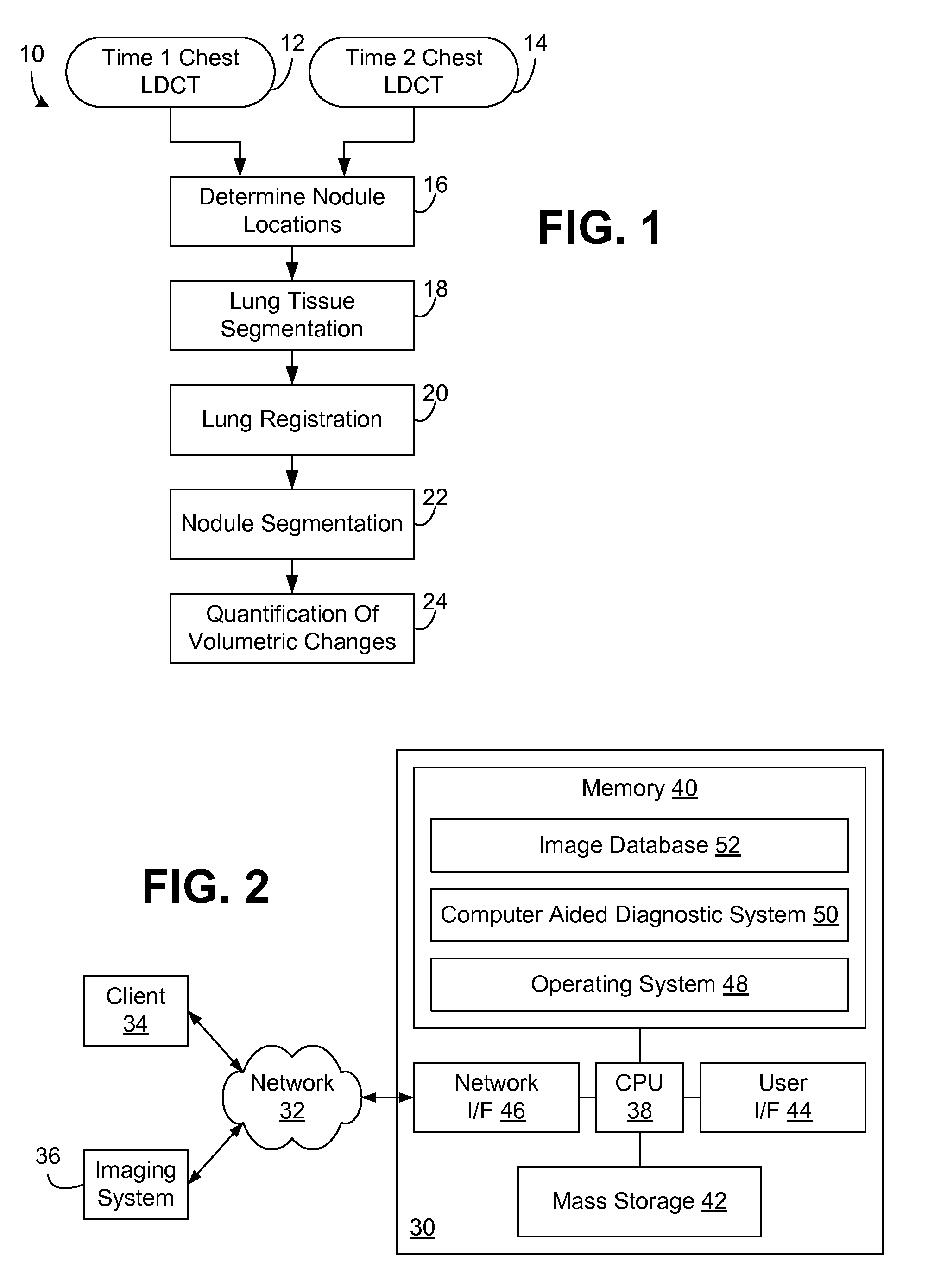Computer aided diagnostic system incorporating lung segmentation and registration
a computer-aided diagnostic system and lung nodule technology, applied in image analysis, image enhancement, instruments, etc., can solve the problems of difficult to distinguish true nodules from shadows, vessels and ribs, and difficult to detect pulmonary nodules with computer-aided image data search schemes, etc., to achieve the effect of changing the volume of a nodul
- Summary
- Abstract
- Description
- Claims
- Application Information
AI Technical Summary
Benefits of technology
Problems solved by technology
Method used
Image
Examples
working example
Lung Registration Working Example
[0139]The disclosed registration techniques were tested on clinical data sets collected from 27 patients. Each patient had five LDCT scans, with a 3-month period between each two successive scans. This preliminary clinical database was collected by the LDCT scan protocol using a multidetector GE Light Speed Plus scanner (General Electric, Milwaukee, USA) with the following scanning parameters: slice thickness of 2.5 mm reconstructed every 1.5 mm; scanning pitch 1.5 mm; 140 KV; 100MA; and a field-of-view of 36 cm. After the two volumes at different time instants were registered, the lung nodules were segmented after registration using A. Farag, A. El-Baz, G. Gimel'farb, R. Falk, M. Abou El-Ghar, T. Eldiasty, S. Elshazly, “Appearance models for robust segmentation of pulmonary nodules in 3D LDCT chest images,” Proceedings of the International Conference on Medical Image Computing and Computer-Assisted Intervention (MICCAI'06), vol. 1, Copenhagen, Denma...
PUM
 Login to View More
Login to View More Abstract
Description
Claims
Application Information
 Login to View More
Login to View More - R&D
- Intellectual Property
- Life Sciences
- Materials
- Tech Scout
- Unparalleled Data Quality
- Higher Quality Content
- 60% Fewer Hallucinations
Browse by: Latest US Patents, China's latest patents, Technical Efficacy Thesaurus, Application Domain, Technology Topic, Popular Technical Reports.
© 2025 PatSnap. All rights reserved.Legal|Privacy policy|Modern Slavery Act Transparency Statement|Sitemap|About US| Contact US: help@patsnap.com



